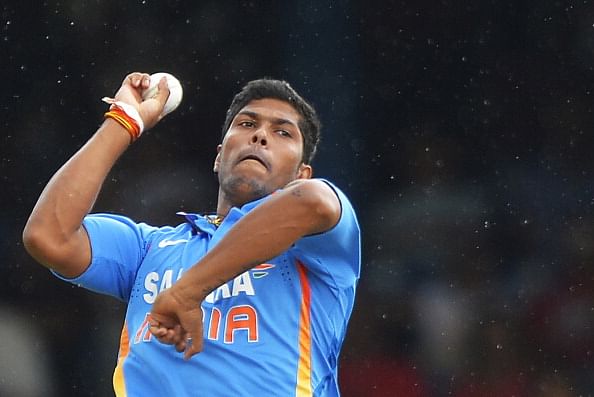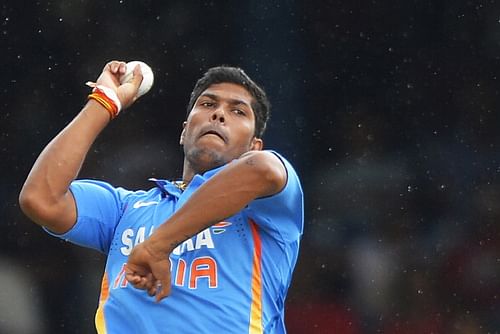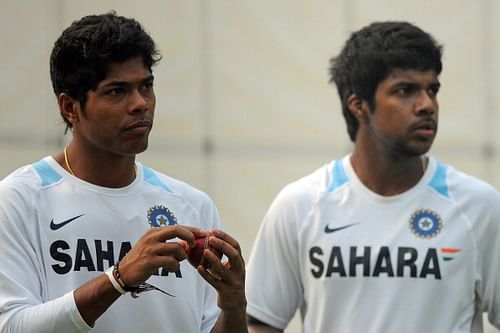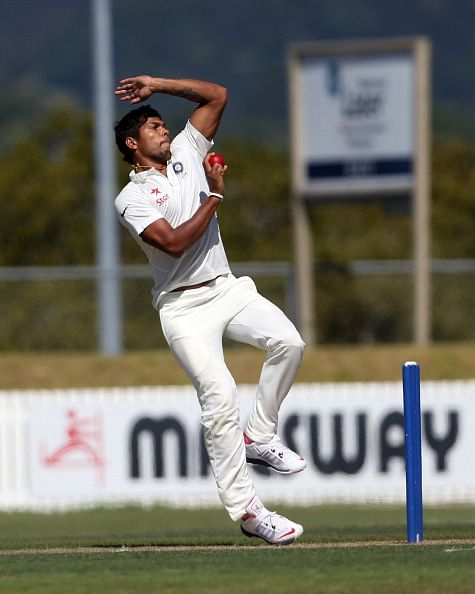
India's tour of England: Varun Aaron over Umesh Yadav - tactical or absurd?

The BCCI’s reluctance to permit the national selection panel to address press conferences has turned out to be a double-edged sword more often than not. While it has repeatedly saved the organization from media-manufactured controversies adorned with sensational headlines, the policy has also come under derisive criticism by the vastly opinionated population of the country.
With no media releases from the committee concerned, it’s not unnatural for rumours and gossips to gain ground in an attempt to shed light on the choices made which always seem to baffle and disconcert the average aficionado regardless of their variety and merit. The situation has mutated to such proportions in recent times that Roger Binny was accused of bias and nepotism for the selection of his son, Stuart Binny in the team touring England this summer.
While the selection of an all-rounder with hardly any experience in limited-overs international cricket, leave alone Tests, undoubtedly, comes as a surprise, the case of Varun Aaron getting a nod ahead of Umesh Yadav remains equally mystifying. The BCCI, if one can trust, has certainly weighed its options and handpicked the team on merit, and that is precisely where the exclusion of Yadav appears desperately farcical.
The case of two tearaway fast bowlers

Varun Aaron, like Umesh Yadav, is one of those rarities in the Indian domestic circuit who regularly clocks 140 kmph and is more than capable of kissing the 150 kmph mark occasionally. At 24, he is a genuine right-arm fast bowler who has promised publicly on several occasions to never compromise on pace.
For a country which had hitherto restricted itself to admiring the speedguns across the border, the excitement and enthusiasm in discovering one of its own was understandable. With almost the entire country clamoring for the development of Aaron’s talent, the premature Test debut only a month after his ODI debut didn’t particularly raise eyebrows.
What ensued thereafter is the same old story of every teenage sensation who strives to defy the implicit diktat of Indian pitches. The back injury that had been troubling him since his teenage days kept Aaron out of the team for the 2011-12 tour of Australia. His subsequent return to the IPL aggravated the damage and put him out of competitive cricket for 15 months.
If physical sustenance had been the sole parameter for selecting a fast bowler, Umesh Yadav would have outclassed Aaron by quite a distance. Although it would be false to declare Yadav as one of the fittest across the world, it can be assured that he is less injury-prone than Aaron. While a shin injury and back trouble have been Yadav’s only issues in his relatively brief career, Aaron has been plagued by recurring stress fractures of the back that had marred his debut Ranji season in 2008-09.
Test cricket remains the ultimate assessment of one’s stamina and endurance. Toiling in the field for more than six hours is, by no means, an easy job and being a fast bowler makes it increasingly demanding. Physical vigour and vitality, therefore, amount to tremendous significance and gambling with a less-than-cent-percent fit pacer would only result in catastrophic consequences for the team.
While opting for six seamers in a massive 18-member squad for the tour of England might seem ludicrous at first sight, the fact that BCCI doesn’t want to compromise on the fitness of its cricketers for the 5-Test series is a reasonable and welcome explanation. The question that arises, however, is how did Umesh Yadav, one of the finest pacers in the country at current form, fall short of making it to the six coveted spots?
Why Yadav scores above Aaron

One of the arguments against Yadav that has deserved some merit in recent years, is his tendency of losing his line and getting predictable later on in the innings. That bit, however, has been safely disposed off in the recently concluded IPL where Yadav has hardly ever been wayward with the length, leave alone losing his line.
Moreover, Yadav fares a whole lot better than Aaron when the criterion is down to movement and control. The glaring deficiency of any other ingredient in his bowling except the pace makes Aaron a painful watch in the Indian jersey. The lack of international exposure makes him a naive customer without any form of guile or intimidation.
In 8 ODIs, Aaron averages 35.72 and has 3 wickets from the only Test match at an average of 43. The potential menace generated by his express speed loses its sting as he persists with the line of the fifth stump. Paralysed of any sort of movement in the air or off the seam, Aaron stumbles upon ordinariness more often than expected.
Umesh Yadav, on the other hand, is known to move the ball both ways provided conditions assist him. With a flexible run-up and smooth delivery stride away from the stumps, he succeeds in angling the ball towards or away from the batsmen. The figures – 32 wickets in 9 Tests – are decent, but it is his aggression that has stood out on every occasion.
Bowling in tandem with Morne Morkel during his stint with the Kolkata Knight Riders appears to have done him a world of good with the improvement in length and persistence with the line visibly evident in the IPL matches. The early English summer that promises a lot of movement through the air would have been ideal for Yadav to exploit his resources and derive movement at such breakneck pace.
As the only Indian to consistently clock 140 kmph without being plagued by injuries, that Yadav played his last Test in November 2012 is an intriguing fact indeed. He has toured with the squad on several occasions without getting a match and this relative experience earns him a huge advantage over Aaron.
The selectors must have had their own rationale and reasons behind their selection decisions, but so do the pundits across the country. Negotiating within the available options may have been tougher than it looks, but that certainly does not justify the absurdity of Umesh Yadav’s exclusion.
The search for bowlers who posses the ability to take 20 wickets in an overseas Test and help India post a win continues to grow more futile with every passing tour. It is miserable to recall that India has lost 10 and not won a single Test in the last 14 starts overseas.
The most recent victory on foreign soil dates back to June 2011, and it will be quite an achievement if the team manages to scrape out an unlikely series win against a relatively frail English squad this time around.